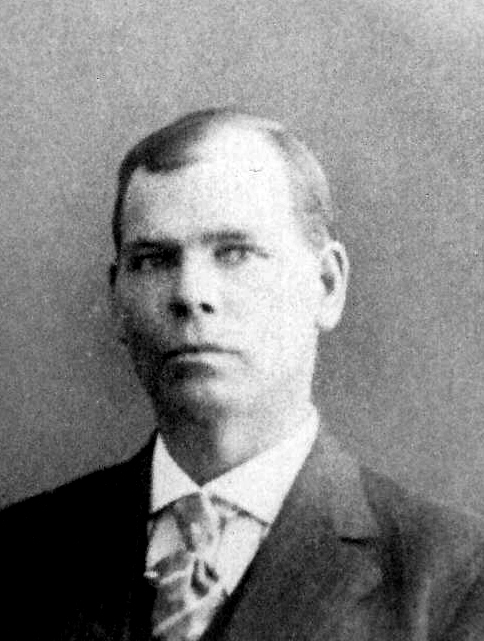
Willard was born May 7, 1868 in Austin Township, Mecosta, Michigan and died December 31, 1946 in Minneapolis, Hennepin County, Minnesota. Willard’s family was living in Staples, Todd, Minnesota in 1892 when he and Ellen Jane McGillivray met. She was born on August 10, 1876 in Port Arthur, Canada, and died September 18, 1923 in Duluth, St. Louis, Minnesota. Ellen was the daughter of John McGillivray and Mary Jane Hudson. Willard and Ella were married on October 22, 1893, in Grand Rapids, Minnesota.
Oral history has it that Willard worked at Kingston’s lumber yard as a lad. Though I have found that the Tom Olin family had a homestead in Little Falls for most of Willard’s younger years, the information about the lumber yard in Grand Rapids seems to imply that they may have not always stayed on the property there. In fact, some of their children were born at either location during the same span of years.
Willard was a kind gentleman though a strict father and a teetotaler. Not a drop of liquor was allowed in the Olin home. He possessed so many useful skills and was able to build a house from the ground up. He was an excellent carpenter and mechanically inclined. He taught many of these skills to his sons and so they were never without the means to make their way in the world.
Willard was an opportunist and bought a lot in Bovey, Itasca, Minnesota. He was led to believe that a main road would go past this lot and he proceeded, with the help of his father, Tom Olin, his brother-in-law Billy Sandretzky, and others, to build a two-story building. The upper floor was for living quarters and the lower floor for a grocery/dry goods store. This was not to be as the town planners chose to move the main route back a block. As a result, Willard’s grocery store was forced to close. The family lived upstairs of the store and as they owned the building, they soon set up a shop for Ella in the storefront where she did tailoring, laundry and pressing.

In the fall and early winter, Willard and his sons Charlie, Otto, and Vern would go out in the woods to cut firewood for household use. They had a hand saw or two-man saw and they would borrow a team of horses and sled. They left in the morning and would first set a dozen snares for rabbits. At noon they would check to see if there were rabbits in the snares and then reset them. They would clean the rabbits when they got home. Then they built a fire and ate their lunch and warmed up before going back to work, cutting, trimming and hauling wood. At home they had a saw and gasoline engine to cut up the wood. Charlie Olin is sharpening the saw on the left. The family ate a lot of rabbit stew and fried the rabbit like chicken. The picture on the left at the bottom was taken in 1908 in Grand Rapids, Minnesota and consisted of 7 deer, a wolf, and a moose. Willard is on the left. The others are Fred Bentz, Jack Griffin, Eric Enstrom and M. Bangardi.
Later, Willard worked in the iron ore mine (1906-07). He earned $1 a day, six days a week to support a family of five children. This is the equivalent of making $29.06 a day today! Fortunately, they were very thrifty and self-sustaining. A lot of foreigners were imported to work in the mines, mostly Austrians and Finns. Willard’s job was dumping train loads of dirt brought up from the mines as the earth was scraped and dug out to get to the ore. The loads were dumped sideways and 6 or 7 men were required to push from the opposite side to dump each load. Willard’s ingenuity soon prompted him to devise a way where one man could stand on the side and with a lever pull the load towards him and thus tilt the load. Also, sometime during this period, the family ran a roller-skating rink.
Willard Olin played the violin and was an accomplished fiddle player much in demand at barn dances and other festive occasions for many miles around. (Vivian Bailey Olin, remembers him coming to play at her school in Meadowlands, St. Louis, Minnesota). Willard and Ella McGillivray Olin also owned a dance hall in Bovey. While Ella took tickets at the door, the entire family orchestra played from the stage. Charles Olin played the violin, mandolin, piano, and accordion. Vern Olin played coronet and sax, Camilla Olin and Rena Olin played piano, Otto Olin played sliding trombone and Delma Olin played drums. Camilla won awards on the piano for her flamboyant style, while Rena was a more accomplished classical pianist (she often played the chords her father had taught her, even up to days before her death). As time marched on new technology was hard to avoid and one day the boys went out and traded their instruments for a Victrola. When Willard came home and saw what they had done, he sunk into his chair and cried. It broke his heart that he had spent so many years teaching his children to play music and now they (as was popular at that time) preferred to listen to a record player.

Little Vivian Olin, just four years old, wore a pretty red dress and matching ribbon in her black hair. She would dance and sing the song, “All Aboard For Blanket Bay.”
Travel between Grand Rapids and Bovey was by horse and buggy. The buggy had no top and was pulled by two horses. There was the driver’s seat and 2 or 3 rows of seats in the back. For heat, stones were heated for a couple of days so that they were warm all the way through. Then they were placed on the floor of the buggy and covered with rugs and blankets to keep the heat in longer. The blankets then would be pulled up over the knees of the passengers. The first car in Bovey was 1912. Otto was approximately 10 years old and remembers clearly the excitement and enthusiasm as the whole town turned out to watch the car as it went up and down Main Street and expertly turned circles in the intersection.
In Autumn several families would pack up wagons with tents, food supplies, jars, oil stoves, and children and then would travel to the Big Woods up North. The men and children would pick blueberries and the women would stay at camp cleaning, cooking and canning the berries. They would stay about a week. There were a lot of berries and the families divided equally. This was a great outing which the families enjoyed and looked forward to each year. It also provided a respite from summer allergies.
In 1916 Willard and family moved to Duluth where he had a job as a carpenter on the railroad (Duluth-Mesabi and Northern Line). He built bridges for the railroad until he was caught picking up the extra coal that had fallen on the tracks. They would rather it was wasted then used to warm a large family of one of their employees! He worked on the railroad in 1918 during the great fire that raged through Northeastern Minnesota. The fire moved so quickly and the people just couldn’t get away. The railroad companies did their best to take away as many people as possible. Tragically, Willard witnessed firsthand the bodies of the smoke inhalation victims that lay strewn along the tracks. Willard and Ellen had the following children:
Camilla Mae Olin
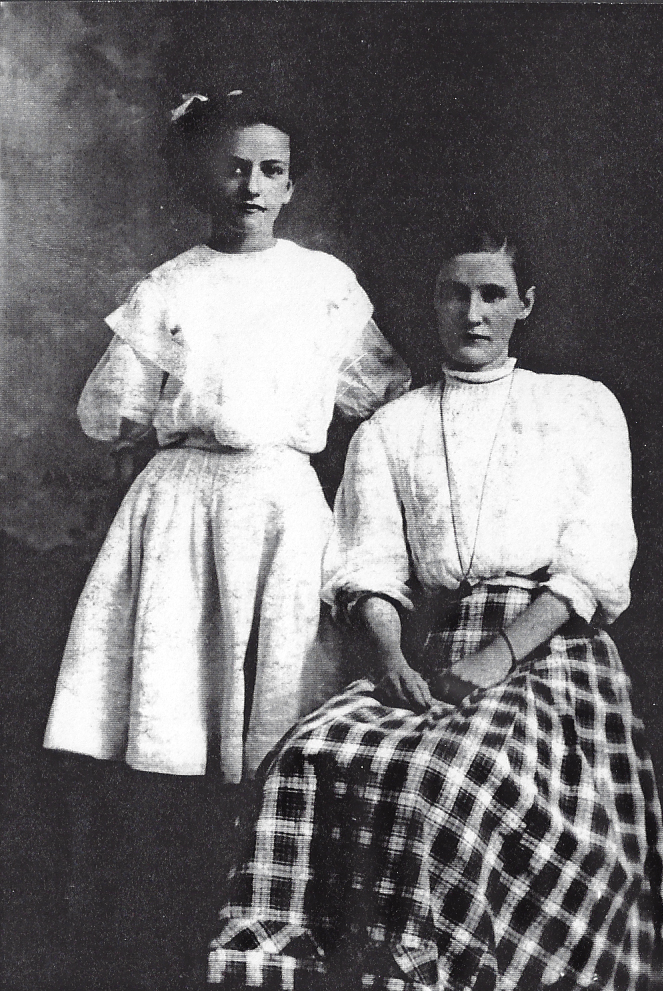
Camilla Mae Olin was born October 2, 1894 in Staples, Todd, Minnesota to Willard Olin and Ellen Jane McGillivray. She died September 15, 1978 in Minneapolis, Hennepin, Minnesota.

She married John (Jack) A. Peterson and they had one son, Elmer John Peterson. He was born September 25, 1928 in Milwaukee, Wisconsin and died November 11, 1993 in Crystal, Hennepin, Minnesota. Elmer was married to a woman named Helen who died of a brain aneurysm shortly after their marriage. Elmer remarried June 3, 1953 in Minneapolis, Hennepin, Minnesota to Ruby Joyce Lund. She was born May 21, 1925 in Partriage, Pine, Minnesota and died December 26, 2014 in Waterville, LeSueur, Minnesota. They had three children:

There are so many wonderful things to say about Camilla. She was beautiful, strong, principled and hard-working. She was beautiful and dressed flamboyantly. Her creative talents are legendary — her favorite boutique was the Goodwill. She could turn an old bathrobe into a king’s robe! She was very independent and after the death of her mother was considered by most to be the family matriarch.
After her husband, Jack, became abusive she took young Elmer and they walked from Duluth to Minneapolis! They were divorced July 29, 1947 in Hennepin County, Minnesota. She was a woman ahead of her time. She received a loan from her sister, Rena, and bought a boarding house in Minneapolis. She worked very hard running it and renovating when she had the extra money. She was also wise about investing her money so that she was taken care of well right up to her death.
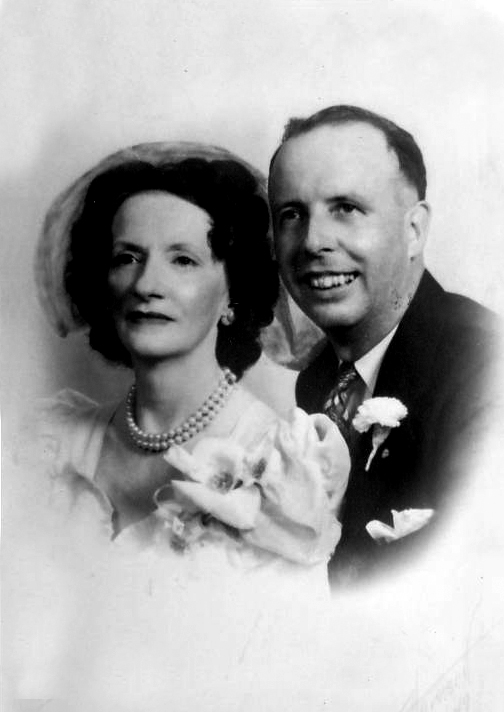
On July 29, 1947 in Minneapolis, Hennepin, Minnesota, Camilla married Melvin Johnson (1907-1985) and they set up home in Minneapolis until her death in 1978.
She enjoyed going on cruises with her sister, Vivian, or her nieces and grandnieces. The other remarkable quality about Camilla was that her loyalty to family went beyond what was popular or convenient at the time. She is best known for helping out those who needed it, regardless of the circumstances. Sometimes when their own families would not or could not help. She never judged.
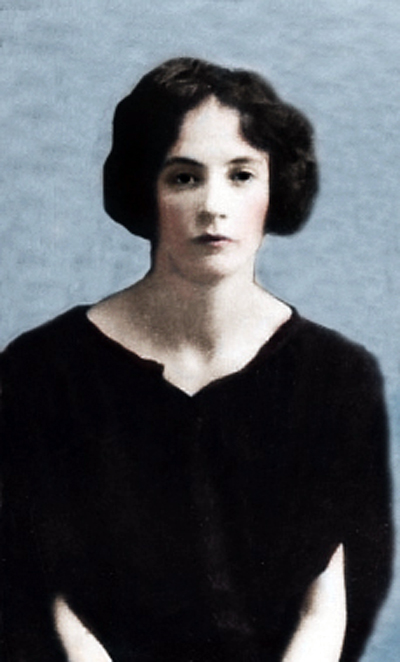
She took on the responsibility of keeping the family together, planning social events, and keeping everyone aware of upcoming weddings, etc.
Interestingly, it was Camilla who I credit with originally getting me interested in the family history. She gave me a copy of the infamous Anneke Jans genealogy from her mother’s side. Did she know what she was doing? (She created a monster!) She could have handed it to any one of her family and I’m sure she did hand out copies to some. I suppose I was struck by how important family was to her. I admired her so much and would have loved to be like her and I suppose I am in some ways. But, she is a hard act to follow. And, I believe that we Olins would manage to find a way to stick together anyway. I sometimes wonder if she isn’t smiling down on me and nodding her head in approval. I hope so. I loved her dearly and her death was a very sad day indeed.
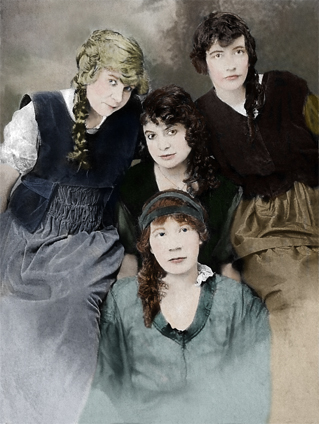
I believe the picture on the right is of Camilla in the upper right corner and her McGillivray cousins. (I took the liberty of restoring and adding color)
Mary Pauline Olin
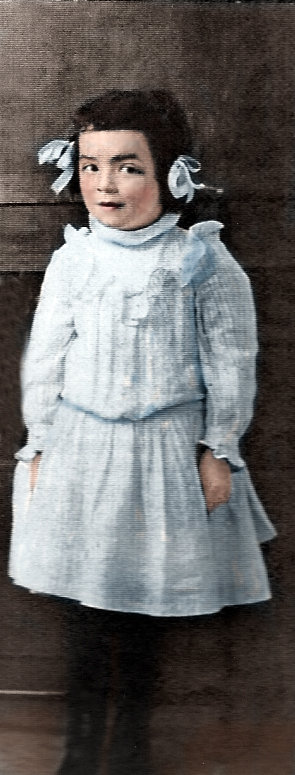
Mary Pauline Olin (Paulina) was born September 27, 1898 and died February 7, 1904 of Pneumonia in Grand Rapids, Itasca, Minnesota.
The loss of Paulina made a lasting impression on the family.
Charles Edward Olin
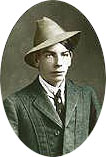
Charles was born August 17, 1896 in Grand Rapids, Itasca, Minnesota and died July 13, 1967 in Minneapolis, Hennepin, Minnesota.
Charlie married May 14, 1918 Grand Rapids, Itasca, Minnesota to Vivian Bailey. He and Vivian eloped while she was just 14 years old.
Charlie came from a very musical family and could play both mandolin and fiddle. His father, Willard, played at barn dances and it was probably there that Charlie became acquainted with the Bailey girls. He would visit the Bailey home and accompany Florence Bailey’s piano playing with his fiddle. Charles owned the first taxi cab (1914 Ford) in Bovey, Itasca, Minnesota and was a roofer and a veteran of WWI. Charlie could build anything from the ground up and passed those skills on to his children.
Charlie and Vivian had 10 children:
Agnes Vivian Olin

Agnes was born August 27, 1918 in Duluth, St. Louis, Minnesota and died August 27, 1997 in Fridley, Anoka, Minnesota.
Agnes was tall and beautiful and had actually done some modeling at one time. She married about 1945 to John Henry Sherby (1890-1965). Her second marriage was November 30, 1966 in Anoka County, Minnesota to Frank Marcy Shimek (1925-2016) and they had 3 children:
- James Francis Shimek born August 11, 1954 in Minneapolis, Hennepin, Minnesota and died July 27, 2018 in Joplin, Jasper, Missouri.
- Gary Lee Shimek born August 15, 1956 in Minneapolis, Hennepin, Minnesota and died August 14, 1971 in Minneapolis, Hennepin, Minnesota.
- Living son
Mary Jane Olin
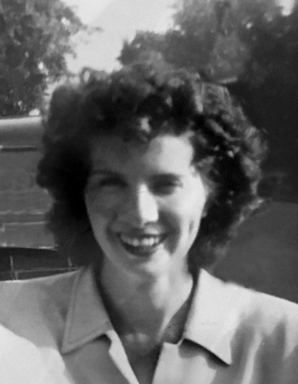
Mary was born January 1 1921 in Minneapolis, Hennepin, Minnesota and died October 12, 2016 in Minneapolis.
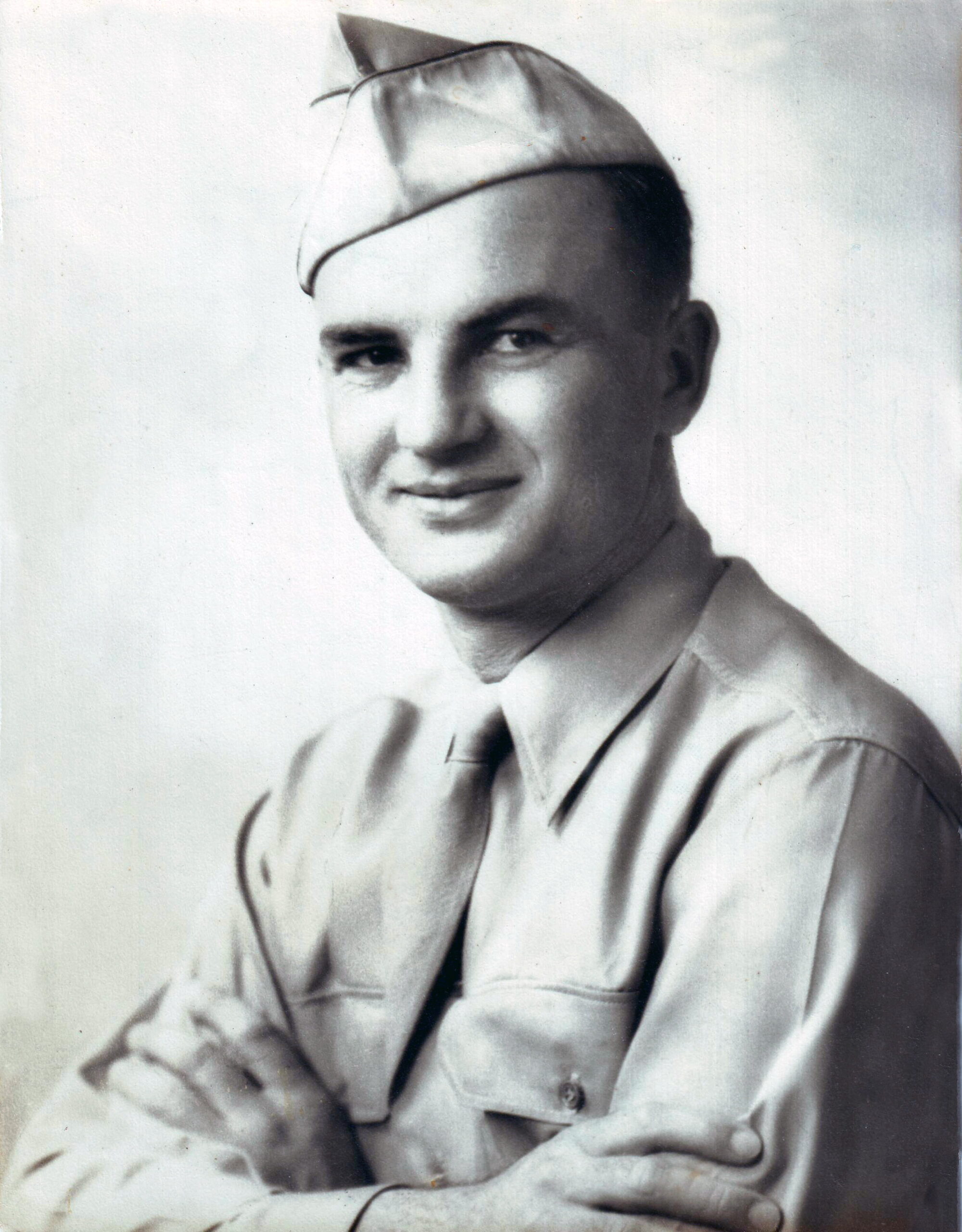
Mary and Elmer had 2 children.
Wayne Gilbert Olin
“Buddy” was born February 21, 1923 in Duluth, St. Louis, Minnesota and died July 24, 1923 in his mother’s arms at St. Mary’s hospital in Duluth of congenital hydrocephalous. He was buried at Park Hill Cemetery in Duluth. The records erroneously list him as Wagner Olin and there is no headstone. He was named for his father’s good friend Wayne Gilbert.
Florence Egan Olin
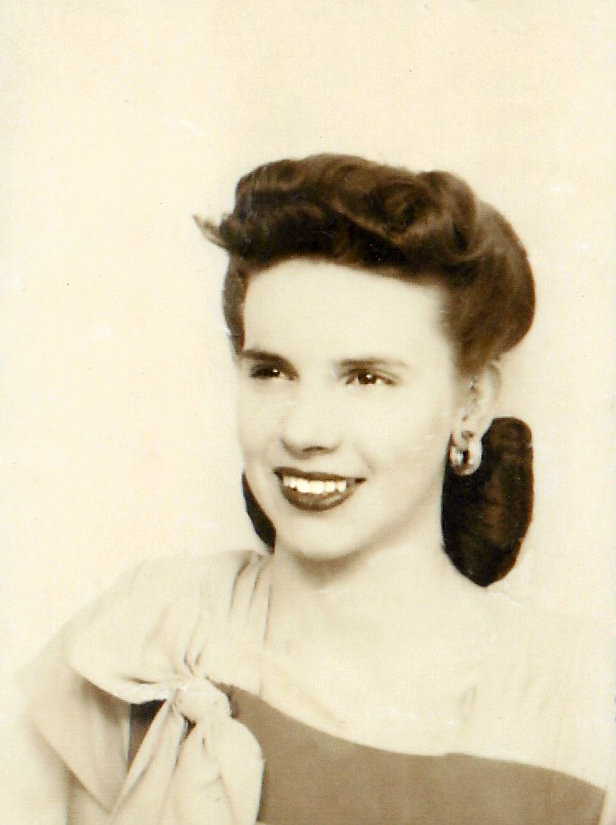
Florence was born October 23, 1924 in Diamond Bluff, Pierce, Wisconsin and died April 16, 2021 in Seattle, King, Washington.
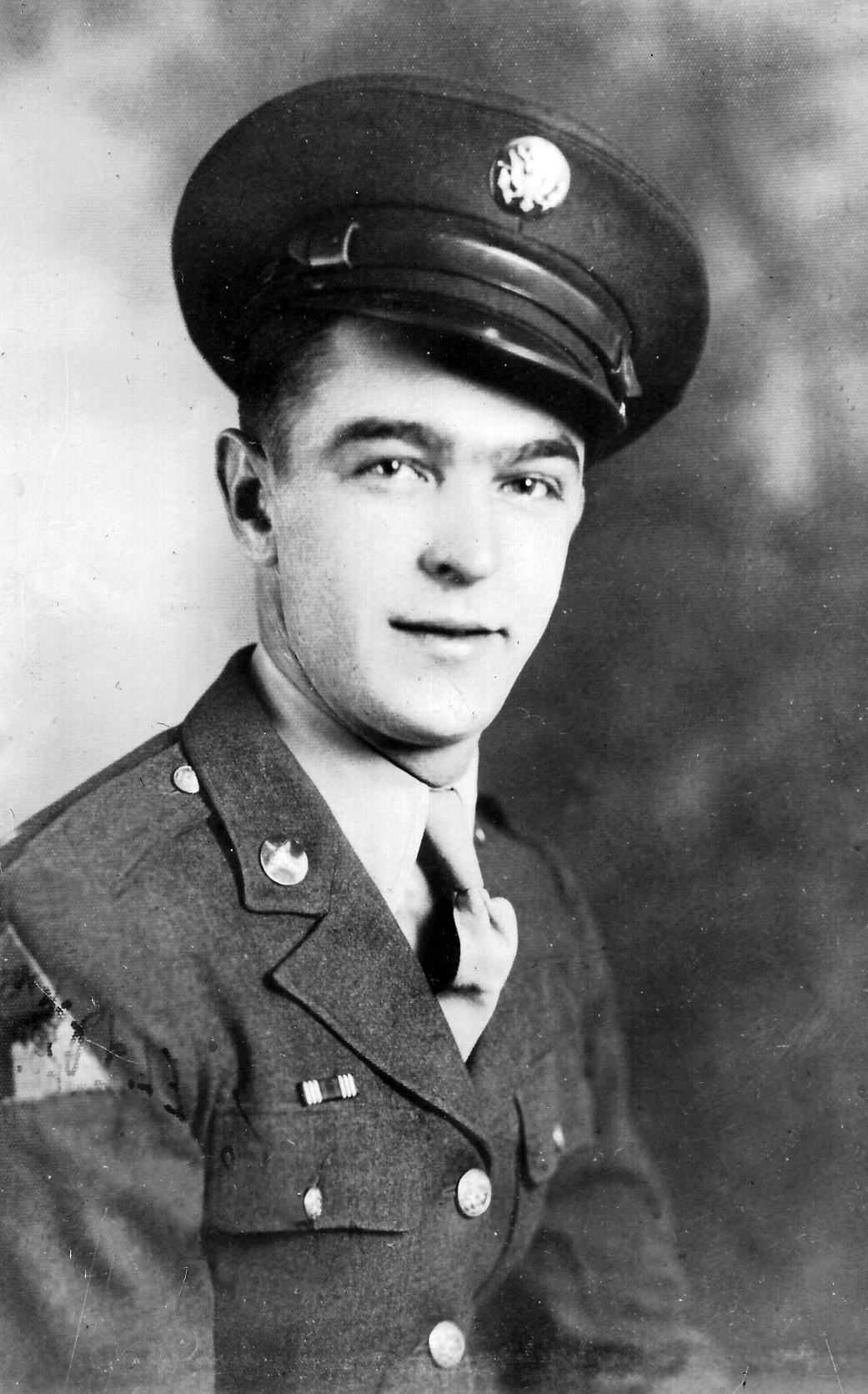
She married on June 15, 1946 in Hennepin County, Minnesota to Edwin Urho Erving. Ed was born July 21, 1923 in Lawler, Aitkin, Minnesota and died June 16, 2016 in Seattle, King, Washington. They had two children. Ed’s parents were Emil Matias Erving (1887-1967) and Katherine Josephine Kempainen (1895-1986).
Charles Edward Olin, Jr.
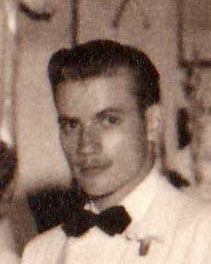
Chuck was born October 30, 1932 in Minneapolis, Hennepin, Minnesota and died November 1, 1981 same place.
Chuck married and had 2 children.
Shirley Ann Olin
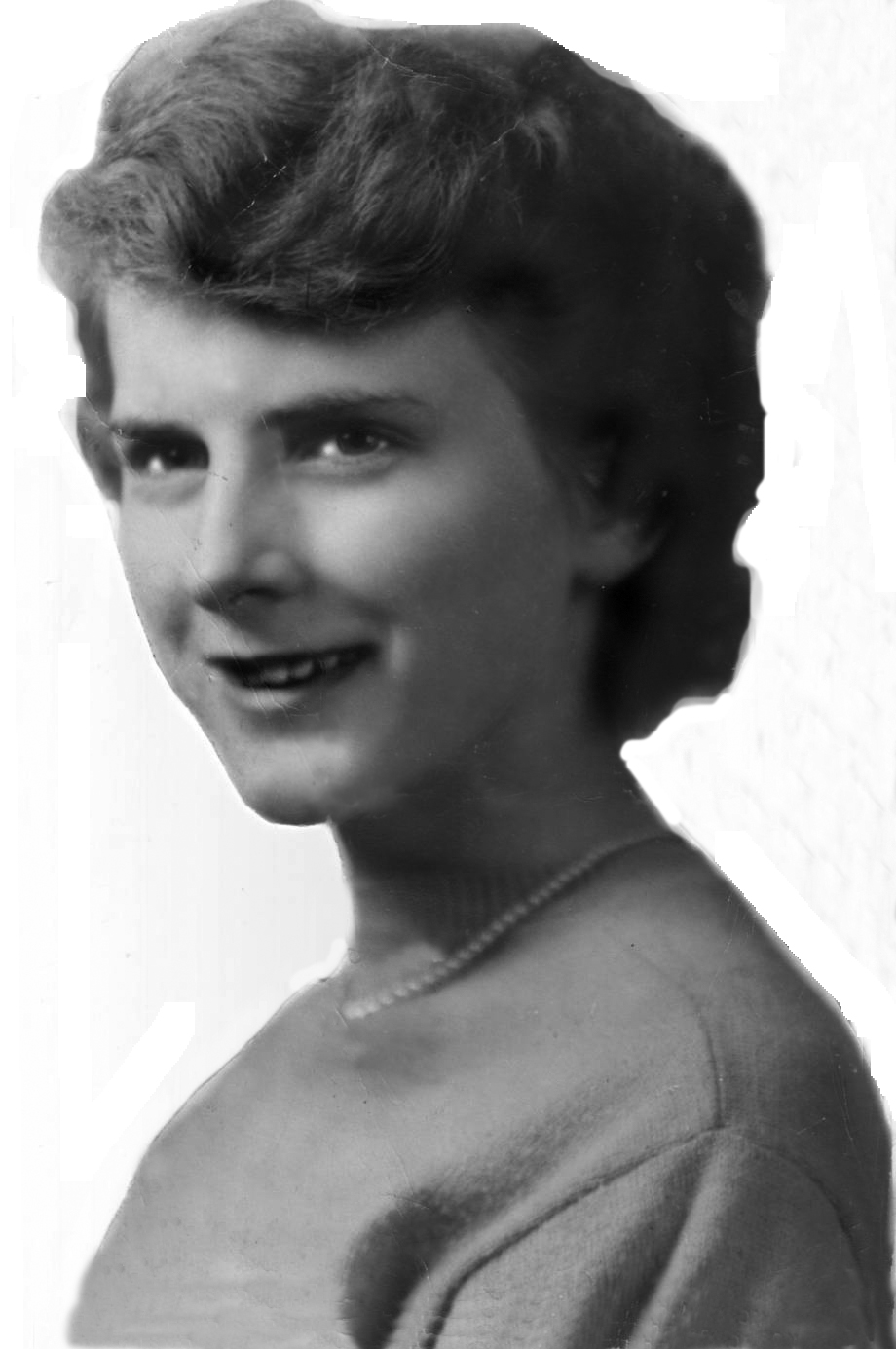
Shirley was born May 2, 1934 in Minneapolis, Hennepin, Minnesota and died August 14, 2010 in Arizona.
She married about 1953 in Minnesota to Wendell Leroy Tillman (1931-2020) and had 4 children. Shirley was a beautiful woman who was talented on so many levels. She could play accordian, paint, sew, and was very innovative. She married for a second time August 21, 1982 in Minneapolis, Hennepin, Minnesota to Henry Leo St. Clair (1935-2001).
Janet Roberta Lee Olin
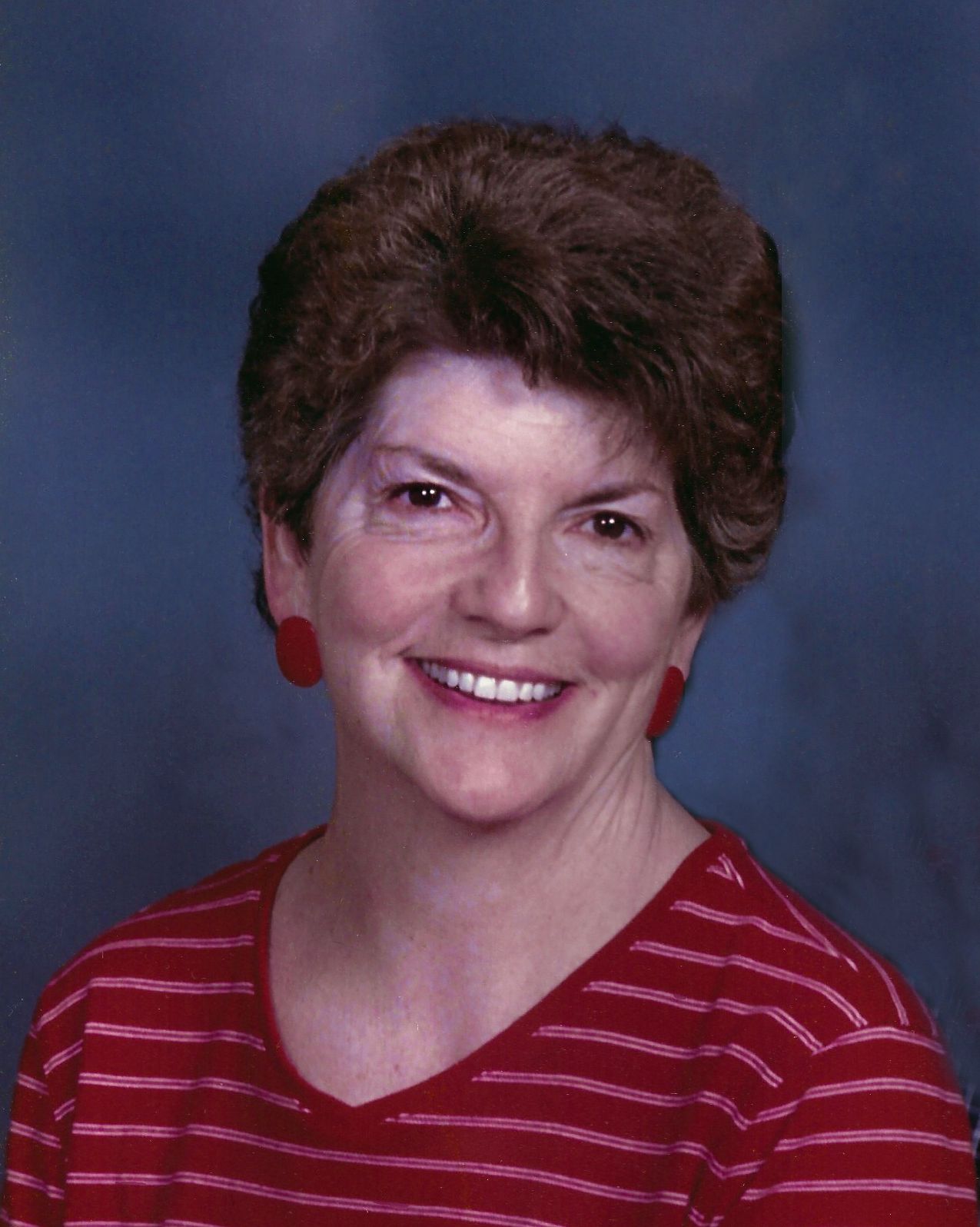
Janet was born February 26, 1939 in St. Paul, Ramsey, Minnesota and died January 27, 2021 in Fergus Falls, Otter Tail, Minnesota.
Janet married first to Robert Harland Ellis who was born March 28, 1934 in Rock Falls, Whiteside, Illinois and died March 11, 2006 in same place. He was the son of Howland Oliver Ellis (1905-1993) and Myrna Irene Glass (1907-1990). They had 5 children:
- Living daughter
- Jane Elizabeth Ellis born March 14, 1959 in Minneapolis, Hennepin, Minnesota, died April 24, 2019 in Stanchfield, Chisago, Minnesota.
- Living daughter
- Catherine Diane Ellis born January 28, 1962 in Minneapolis, Hennepin, Minnesota, died May 20, 2013 in Zimmerman, Sherburne, Minnesota.
- Living son
Janet married second to Dawayne Walter Stage who was born July 24, 1936 in Seaforth, Redwood, Minnesota and died February 15, 1999 in Minneapolis, Hennepin, Minnesota. He was the son of Walter Otto Stage (1901-1953) and Olga Bertha Teresa Glassman (1906-1971).
Janet married a third time and her husband is still living.
Daughter
This daughter is still living.
Gerald Richard Olin
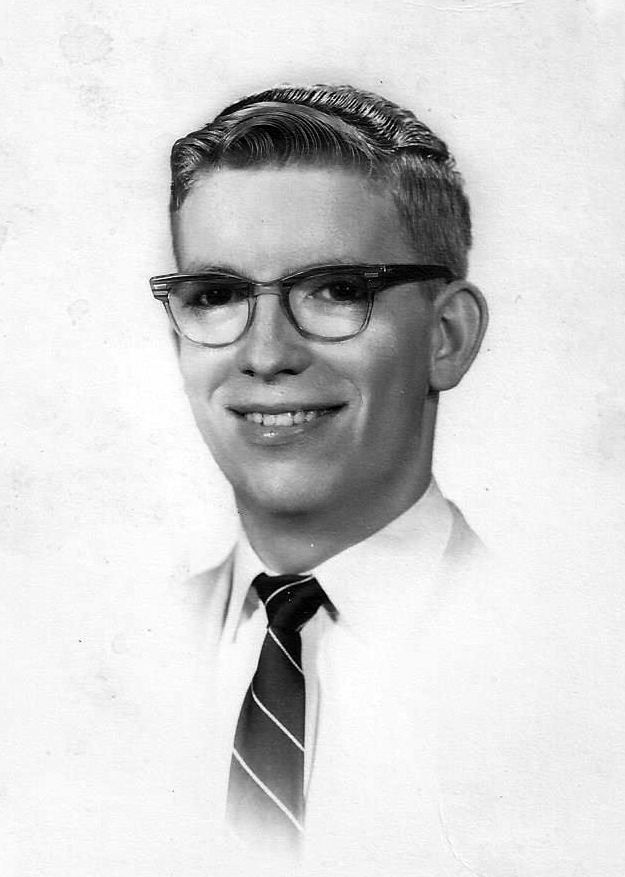
Jerry was born April 13, 1942 in New Brighton, Ramsey, Minnesota and died June 14, 2011 in Denver, Colorado. He married and had 2 children.
Andrea Mae Olin
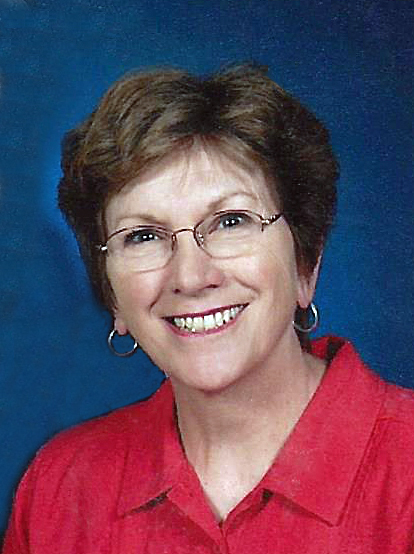
Andrea was born June 1, 1943 in New Brighton, Ramsey, Minnesota and died December 14, 2020 in Texarkana, Bowie, Texas. She married and had 2 children.
Rena Esther Olin
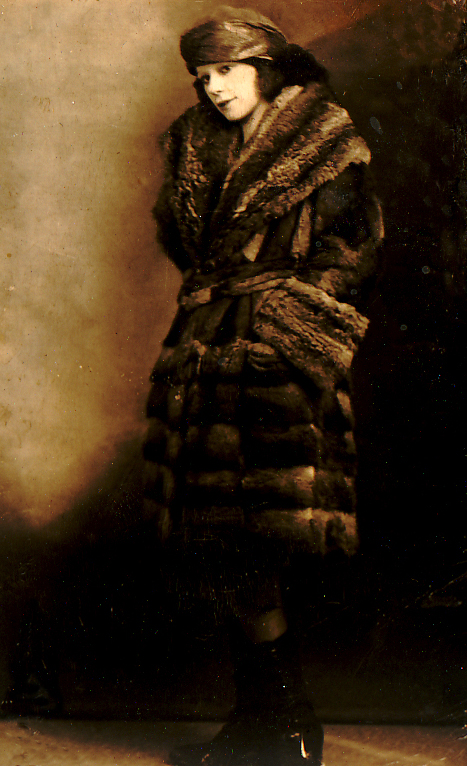
Rena was born June 18, 1900 in Staples, Todd, Minnesota and died December 23, 1987 in Minneapolis, Hennepin, Minnesota.
She married February 20, 1932 in Minneapolis, Hennepin, Minnesota to Joseph John Andler (1894-1947). They had one daughter:
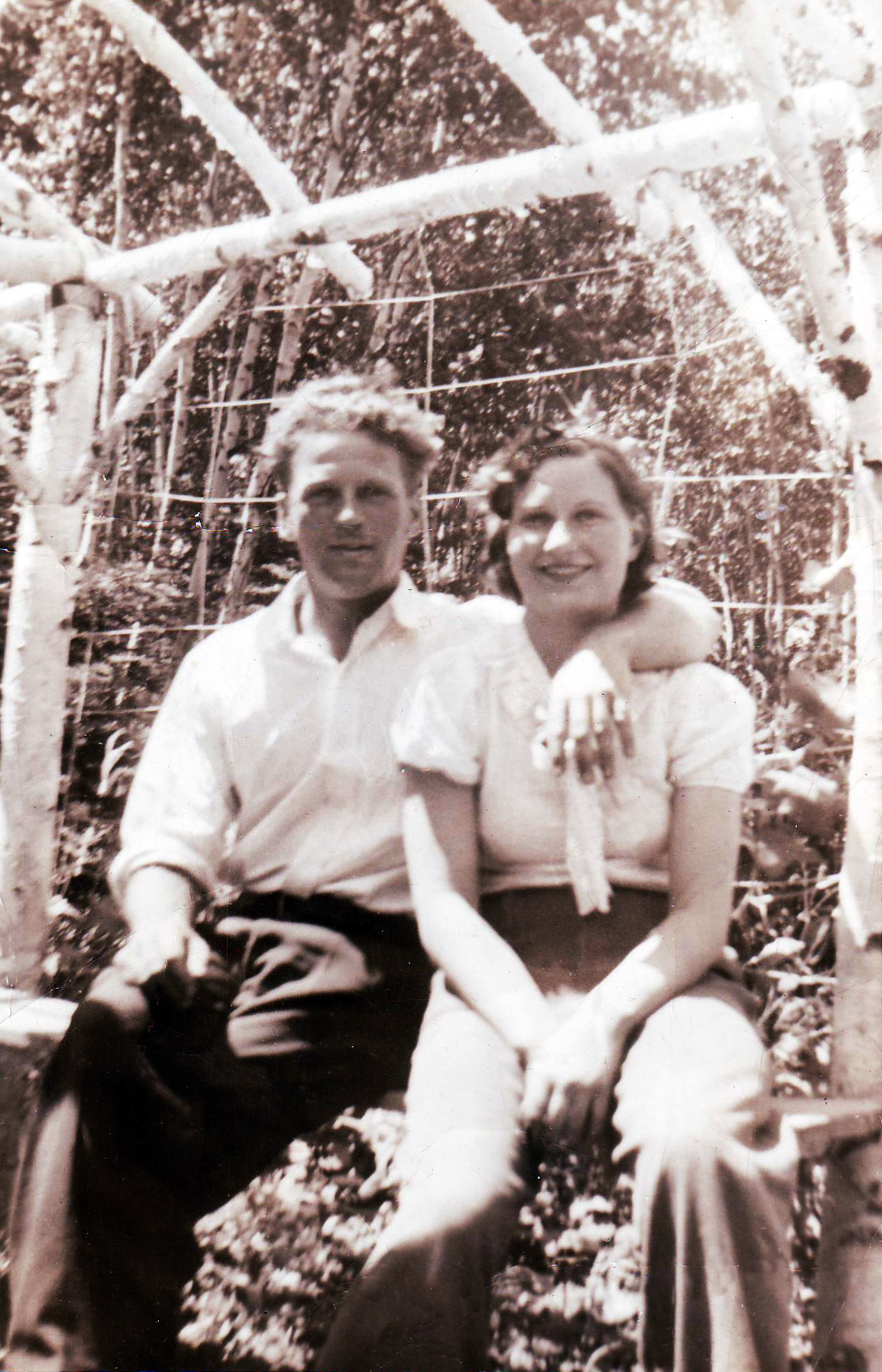
June Alyda May Andler who was born April 24, 1920 in Minneapolis, Hennepin, Minnesota and died April 22, 1972 in Rochester, Olmsted, Minnesota. She married on July 3, 1937 in Minneapolis to Lawrence Albert Larson (1915-2000). They had two daughters.
Otto Elmer Olin
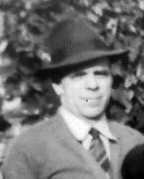
Otto was born April 12, 1902 in Grand Rapids, Itasca, Minnesota and died August 29, 1985 Minneapolis, Hennepin, Minnesota.
Otto is so fondly remembered by his family. He has a large number of descendants and many have inherited his humor and zest for life. He was an upholsterer in Grand Rapids for years and people still speak of his fine work.
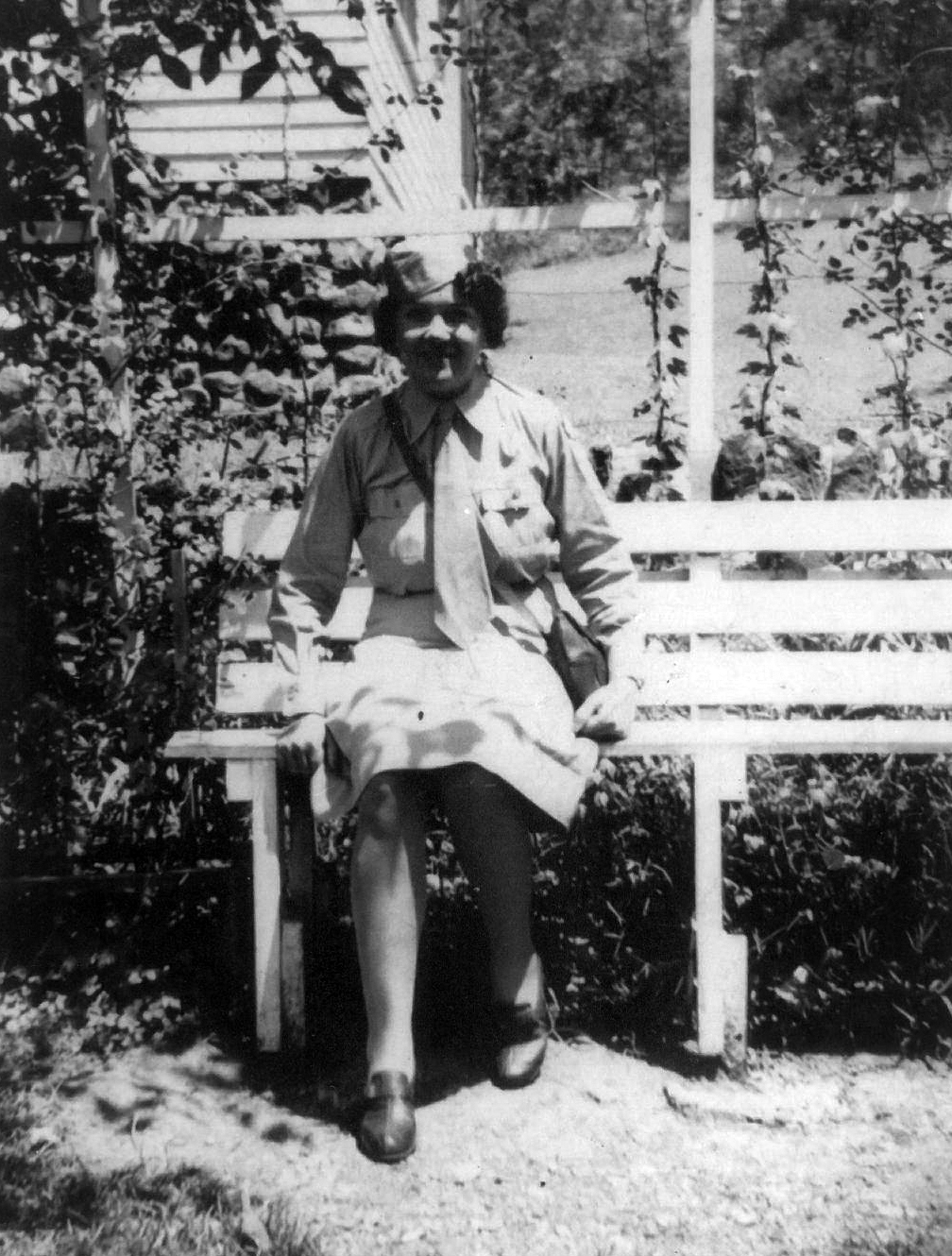
On May 25, 1921 Duluth, St. Louis, Minnesota Otto married Edith Sommers who was born December 19, 1902 in Republic Township, Marquette, Michigan and died May 18, 1993 in New Brighton, Ramsey, Minnesota. See more information on Edith below.
They had two children:
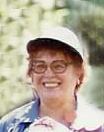
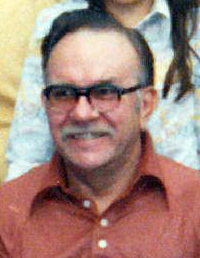
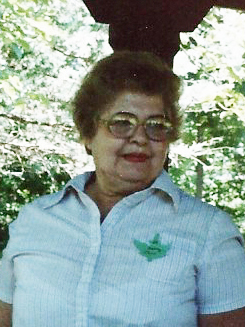
Edith Sommers
Edith was born December 19, 1902 in Republic, Marquette, Michigan and died May 18, 1993 in New Brighton, Ramsey, Minnesota. She was the daughter of John Sommers (1873-1918) and Christina Koski (1880-1945). She worked as a live-in housemaid for Dr. Bettenhouse in Duluth, Minnesota. On her days off, she and her girlfriends would take the streetcar (five cents) out to Lester Park, an amusement park on the east end of Duluth. It was while there strolling around enjoying the concerts, rides, etc. that she met Otto Olin, who would go there with friends and cousin Bill Kingston. After they married they lived with Otto’s parents, who were renting a big house on Park Point. At that time Vern, Delma, Vivian and little Gerry were still living at home. Father and Vern worked sawing and delivering wood; Vivian worked as usher at Sunbeam Theater. Edith and Otto built a little house up in the heights; however due to pregnancy complications, Edith stayed with Camilla down in town, Woodland, to be near the hospital, where Ellen was born on November 6, 1923.
Jobs became scarce in Duluth even before the Wall Street crash in 1929. So from 1927-1934 Edith and Otto, along with the Olin family members, moved restlessly seeking work from Duluth to Milwaukee, then Chicago, back to Milwaukee, Minneapolis, Hennepin, Minnesota, and finally to New Brighton, where Edith and Otto settled. They separated in 1942, Edith joined the Army as a WAC during World War II, retiring as a Master Sergeant in 1945.

Edith remarried on March 20, 1965 in Hennepin County, Minnesota to Harris Dudley Manchester (1905-1997).
Vern Olin
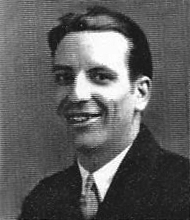
Vern was born July 29, 1903 in Grand Rapids, Itasca, Minnesota and died April 10, 1963 in Minneapolis, Minnesota.
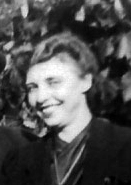
Vern married Vilhelmina Elisabet (Mina/Myna) Skoglund was born November 19, 1899 in Ljusdal, Västernorrland, Sverige, Sweden to Jonas Skoglund (1875-1955) and Sara Karolina Simonsson (1863-1941). She immigrated with her parents in 1903 and became a naturalized citizen in 1939. I believe she most likely remarried and nothing else is known about her.
Vern and Myna both worked at Land-O-Nod (mattresses) in Minneapolis, Hennepin County, Minnesota. They had one son:
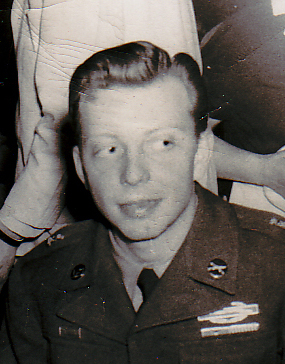
Willard Jack Olin (Jackie) was born March 30, 1928 in Minneapolis, Hennepin, Minnesota and died December 11, 1975 in St. Cloud, Stearns County, Minnesota. He is buried at Fort Snelling in Minneapolis. He was a PFC in the Army during the Korean War.
Jackie married Lois Arlene Wagner who was born February 7, 1932 and died April 1, 2017 and is also buried at Fort Snelling, Hennepin, Minnesota. He worked at the St. Cloud Reformatory. Jackie and Lois had the following children who I believe died at or shortly after birth:
- Baby boy Olin born October 6, 1954 in Hennepin County, Minnesota and died in 1954 same place.
- Baby girl Olin born March 10, 1956 in Hennepin County, Minnesota and died in 1956 same place.
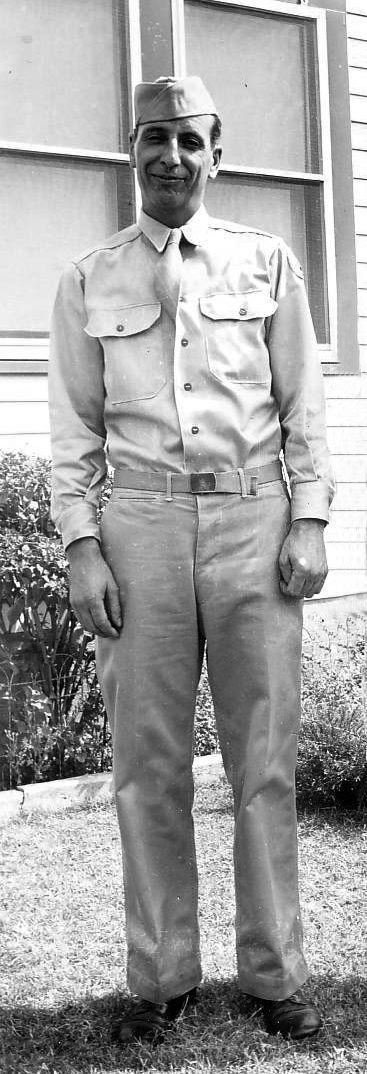
Vern was a Private in the Army during WWII.
Vivian Ellen Olin
Vivian was born January 10, 1906 in Grand Rapids, Itasca, Minnesota and died May 9, 1991 in Anoka, Minnesota.
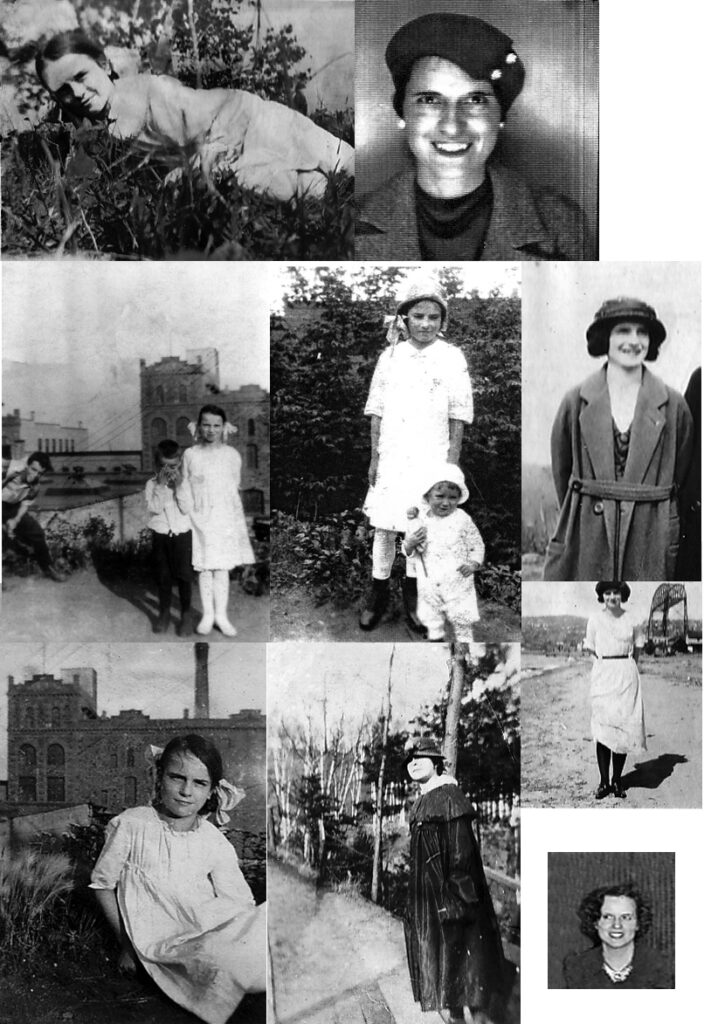
Family oral history says that she had fallen in love with a young man that her parents did not approve of and was so broken-hearted that she determined to never marry. She was a beautiful woman with her mother’s dark hair and piercing, almost black, eyes. She was a classy woman who dressed well though not flamboyantly. She was proper, independent, and like the rest of her family–very industrious.
She was one of the first women comptrollers working with the U.S. government. She was very close to her family and spent a lot of time with her sisters Camilla and Rena. Memories:
Memories of Greg Olin
I spent so many weekends and summer days with them. They took me to movies, to eat out (John’s Place, Nankin, etc.) [in Minneapolis] At Rena’s she would play the piano and I would sing; we really enjoyed these times together. Rena paid for a private tutor for me one summer (when I flunked first grade). This help may well have changed my whole life. I also remember so many good times under the tin roof in the rain at Rena’s lake cabin.
Vivian lived in the same house with us when I was very young and we shared the same house again when I was in college. I remember attending the Christian Science Church with her and, while I never joined this church, I know that her compassionate nature was directly related to her special faith. Her encouragements in my formative years continue to bless my life even today.
There are so many times I could reminisce about, but let it suffice to say that their love touched my life and I will love them forever for being a blessing in my life.
Memories of Marilyn Olin Finnegan
I remember Vivian did bookkeeping for a government building in Minneapolis. She lived a year or two in Kansas City, Kansas. I remember when I was young going to visit her in Kansas. Vivian had rented a room from Dad and Mom in our house for years and ate with us everyday so she was a very important part of our lives. Vivian was always generous and kind to all of us. For some reason Vivian never married and so we were her family. Whenever I would come back to town for a visit, Vivian would treat me and my family out to eat at a nice restaurant. My most wonderful memory of Vivian was when I was going through a rough time in my life when I divorced my first husband. Vivian took me and my daughter Lori on a fun trip to Brownsville, Texas, and we took a few trips across the border to Mexico and also to explore the beautiful streets of San Antonio, Texas. I had so much fun with Vivian, and it was a wonderful generous thing for her to do. But that is how Vivian was–she was there for any of us that needed her. I think of both Vivian and Rena all the time when I go back to Minneapolis for a visit and it doesn’t seem the same without going out to eat and a movie with the two of them.
Memories of Ellen Olin Frank
I was told that as a teenager Vivian worked as a cashier at the Sunbeam Theater in Duluth. I don’t know how much formal education she had, but I was told she took some business courses. The first big word to enter my vocabulary as a child was “com-tom-eter operator.” I never was told what that was, but it was very impressive to my five or six-year-old mind, and immediately elevated her in my eyes to someone very special. I do remember the times she would come to visit on her vacation. This was during the depression years of the thirties; and Dad would often say we were “too broke” to buy, to do, or to go. I learned at a very young age not to ask for much of anything. We got by on the bare necessities. But when we knew Aunt Vivian was coming, there would be a burst of excitement; Mom had a flurry of special housecleaning; Dad cleaned the car and did some tinkering on it. On the big day of her arrival, we dressed in our best and went down to the train station to welcome her. When she stepped off the train, she was a beautiful vision–like a movie star. She was lovely, wearing the latest fashion dress like I saw in the movies, with white gloves, white handbag, white shoes, and a stylish hat with flowers and little veil. I was totally in awe of her, until she hugged me and smiled and just laughed in delight; she was so happy to see her family. I was told that worked for the railroad and was sent to cities around the country. Milwaukee, Janesville, Kansas City (which she told us she hated) and later in Washington, D.C. and Minneapolis.
My earliest memory of Aunt Vivian, however, was in Milwaukee. I was age five to seven during the Milwaukee years. The family would often gather around Aunt Camilla’s player piano and sing for hours, old and new songs, with good voices that could harmonize, especially my Dad and Uncle Vern. Those were most happy times for me. But I wish you could have seen and heard Aunt Vivian! She was a quiet person, but she absolutely came alive around that piano. Her brown eye sparkled as she sang along. She had a lovely voice, and smiled as she sang. Two of her favorites were catchy little tunes in ragtime “Vo-do-ee-oh-do” and “Doodley-Doo.” To this very day I think of her when I happen to hear those melodies. She was not a Charleston Flapper at all, but she loved those lively tunes. That’s when I really began to know her and love her. But she always went away too soon, back to her job out of town.
Aunt Vivian had deep brown eyes, dark brown chestnut hair, and milky-white complexion, and always slim and trim. My Mom told me she looked exactly like her mother, Ella, who had died in 1923, just two months before I was born. She would have been seventeen then, old enough to seek out on her own career. And what a successful career it was! She advanced to Comptroller, with an excellent salary and lots of vacation time. She traveled extensively to the Holy land, a Mediterranean cruise, West Indies cruises, to Mexico and across the U.S.A. She often traveled with women friends.
I remember aunt Vivian as being a quiet, reserved person, always a lady. Can any one of us remember her ever saying or doing anything immodest? No, if something improper were said or done in her presence, I remember her hand would fly to her cheek or cover her mouth; those deep brown eyes would spark with anger. Although she would not say anything, we knew she was displeased and embarrassed for us.
She was a special lady, in and out of my life, all through the years, giving me a little glamour and excitement during those long depression years.
Delma Wayne Olin
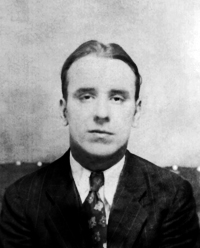
Delma was born June 15, 1909 in Grand Rapids, Itasca, Minnesota and died February 23, 1984 in Minneapolis, Hennepin, Minnesota.
He married on July 19, 1947 in Hennepin County, Minnesota to Clara Lange.

He was a construction contractor having built many fine buildings in Minneapolis including a Bridgeman’s Ice Cream Parlor in Richfield, Hennepin, Minnesota. Delma also built apartment buildings for his sister, Rena Olin Andler. Their children:
Geraldine Marie Olin
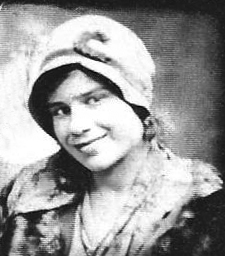
Geraldine was born January 15, 1916 in Bovey, Itasca, Minnesota and died November 1, 1997 in Slinger, Washington, Wisconsin.
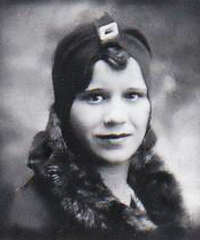
Gerry was an “oops” baby and she was only called baby until she was about 4 when she wandered away and ended up at the police station. The policeman kept trying to get her to tell him her name and she just kept saying “Baby”. So, they finally decided to name the poor kid.

Gerry married on June 5, 1937 in Milwaukee, Milwaukee, Wisconsin to Robert Menzel Heyden who was born August 28, 1913 in Milwaukee, Milwaukee, Wisconsin and died September 23, 2003 in Slinger, Washington, Wisconsin. He was the son of Ernst Heyden (1887-1953) and Franciska A. Rosie Menzel (1891-1983).
Gerry and her husband Bob were lovely people. Gerry and Bob had 2 children.
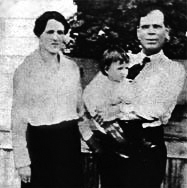
What has been passed down orally through the generations is that Ella and Willard loved each other very much and she married him in spite of the objections of her family. My grandmother, Vivian Bailey Olin who was her daughter-in-law (wife of Charles Olin) remembers Ella fondly. She said that she was a beautiful woman with long black hair and that her pictures did not do her justice.
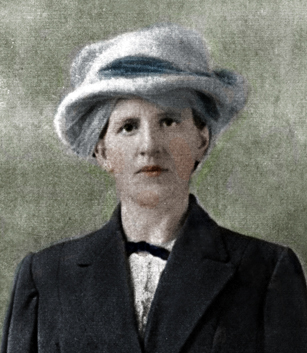
She was especially sweet and kind and a very hard worker. Unfortunately, she died in her forties, from pneumonia. After his wife’s death, Willard moved to Minneapolis, Minnesota from 1925 until his death.
Memories of Ella shared by her son, Otto
When he was about 10, three or sometimes four times a week his mother would bake bread for the family. The bread would be mixed and set to rise during the early evening hours and would be baked after the family was in bed. The oven was not large enough to hold all the loaves at one time, so when one batch was done another would be placed in the oven. Otto remembered these times fondly as he was the only child allowed to stay up with mother because he was the only one who always got up in the morning without effort from mother. He and mother would sometimes play games. Or sometimes mother had sewing to do. At that time of the night she had patience and in the quietness, she taught Otto how to use the sewing machine. This is how he learned to sew, which later became his lifetime career in furniture upholstering. However, the highlight of the evening was sampling the hot, fragrant loaves as they came out of the oven!
Memories of Willard shared by his granddaughter, Ellen
In New Brighton, while building our little house, the workers were taking a break; Grandpa Willard, my dad (Otto), my uncles Charlie, Vern and Delma. I had a question, and dad said to ask his Pa.
“Grandpa,” I said, “Can I ask you something? How do you put our toenails on a stud?” Come with me and I’ll show you,” he answered. I was a little kid of about eight and took his hand as he led me to the pile of studs, holding his hammer in the other hand. We lifted one of the studs upright on the pencil line of the bottom rail. “The stud has to be nailed to the rail. How do we do it? We can’t pound the nail straight-in anyplace. That’s when we toe it in, at an angle, slanted so it goes through the stud into the rail. The biggest mistake the Rookies make is to use too few nails,” he explained. “Use at least two nails on each side and sometimes three.” That’s how Grandpa taught me; by showing me. He showed me how to pound nails out of the used lumber we were using. He also showed me how to straighten the crooked nails so they could be re-used.
Grandpa Willard was mostly a sad person. He seldom smiled or laughed or talked to anyone. He had blue eyes that knew how to twinkle. He was quite tall and had a big chest. He also had big hands. My dad also had those same big hands; big, yet gentle. I believe family traits and characteristics are handed down from one generation to the next. Look at my son Jim’s hands, and you will see those same hands!
Grandpa Willard lived in town and he liked coming out to visit us in New Brighton. He liked mom’s home-cooked meals; he got tired of restaurant food all week long. He ate a lot but said very little.
The biggest surprise about Grandpa Willard was his fiddle. I didn’t know he had one as nobody ever talked about it. The first time I heard him play was at Stone Lake. The story of Stone Lake is that it was a small resort north and west of Two Harbors. The resort was owned by Aunt Sadie and Uncle Billy Sandretzky. Aunt Sadie was a sister to Grandpa Willard. She and Billy had a large family and so did Willard. When they all got together in the summer for a reunion, it was a huge gathering! There was a big house and several cabins and when the families arrived, tents were set up as well. Also set up was a big wooden platform with a rope railing. Towards evening the music started. Accordion, mandolin, banjo and Grandpa with his fiddle. Now he came alive. He smiled and his eyes lit up. His toes tapped to the tune and his whole body swayed back and forth as he played. I couldn’t stop watching him all evening. He seemed like a new and different person. Everyone danced! There was the Polka, the Schottitz and the Waltz; and the Circle Two-Step as well as the Square-Dance with a caller for both. Grandpa played all evening, never seeming to tire.
When everyone was taking a break, Aunt Sadie went over to talk to Grandpa and then she announced, “Wil is going to play us a tune.” Grandpa stood up and played the sweetest music I had ever heard! He never played scratchy or whiny. His playing was always smooth and sweet. I wanted him to keep on playing forever, it was so beautiful! Through the years I heard him play at a few parties. As he aged, he still played beautifully.
Willard started playing the fiddle at a young age. In that era dances were the primary leisure activity. Hay wagons were used to pick up friends along the way to the designated dance location. In winter they put on sleigh runners in place of the wheels. These country dances were held in town halls, barns or schools. Willard and friends were popular at the dances. They rode around the countryside to the little towns and villages where every performance was well attended. It was at one of these dances that Willard and Ella first met. He was from Anoka County and she grew up in Staples. Her family (McGillivary) was a strict, devout, religious group (Presbyterian). They objected to their daughter marrying an itinerant fiddle player who didn’t go to church. They refused to allow her a church wedding, so the two of them eloped, and went to the Olin family in Anoka County.
Later the Olin group moved to Grand Rapids. Willard worked at the busy Kingston Wood Lot, and also in the construction of houses with his father, Tom Olin, who was a master builder. Willard earned extra money playing his fiddle at the many dances in the area.
In the spring when the ice melted off the river, the lumberjacks left the northern forests and floated their boats down river where they tied up above the rapids. After a long, cold winter, they wanted a bath, clean clothes, and good food; along with some fun. When several of these jack-boats were tied up, there were a lot of men and the town welcomed them because they had money to spend. A big wood platform was assembled near the landing. Musicians arrived, and soon the dancing started; all during the afternoons and into the wee hours of the morning. Willard was there, of course, along with a lot of other musicians, and sometimes a piano was carried up to the platform for Rena to play the piano while Pa played the fiddle. Pa would let Rena and Camilla, his teen-aged daughters, dance with the “Jacks” as did many of the townspeople. This was allowed only during the afternoon and early evening, but when the drinking began and the carousing started to get disorderly, he closed up his fiddle and took his daughters home. Neither he nor Ella ever indulged in, or allowed, any such behavior in their home. Ella and Willard didn’t go to church, but they instilled strict moral ethics in their children. When the lumbering industry dwindled away, Willard and Ella moved to Bovey, and then later to Duluth.
Willard was greatly devoted to Ella, and when she passed away in 1923 it was as though his life fell apart and he became a sad, lonely person.
At my vast age of 83, I have the joy of retaining my memory so that I can reflect and recall events from my childhood and the happiness I had in the closeness of my Grandpa Willard and all his children, my beloved aunts and uncles.
Another joy I have is the fact that so many family traits, characteristics and mannerisms are inherited and passed from one generation to the next. Interacting with my own children and their families and with my many cousins brings back many memories of my childhood experiences. What a great heritage!
Ellen was the daughter of Otto Olin.
Sources
“Minnesota Death Index, 1908-2002,” database, FamilySearch (https://familysearch.org/ark:/61903/1:1:V4ZP-1HV : accessed 7 October 2015), Willard E Olin, 31 Dec 1946; from “Minnesota Death Index, 1908-2002,” database, Ancestry (http://www.ancestry.com : 2001); citing Hennepin, Minnesota, record 1025634, certificate number 024065, Minnesota Department of Health, Minneapolis.
“Minnesota Death Index, 1908-2002,” database, FamilySearch (https://familysearch.org/ark:/61903/1:1:V4C7-KMK : accessed 7 October 2015), Vivian E. Olin, 09 May 1991; from “Minnesota Death Index, 1908-2002,” database, Ancestry (http://www.ancestry.com : 2001); citing Anoka, Minnesota, record 2388382, certificate number 011474, Minnesota Department of Health, Minneapolis.
“United States Social Security Death Index,” database, FamilySearch (https://familysearch.org/ark:/61903/1:1:J1G5-8Z6 : accessed 7 October 2015), Willard Olin, Dec 1975; citing U.S. Social Security Administration, Death Master File, database (Alexandria, Virginia: National Technical Information Service, ongoing).
“Minnesota Death Index, 1908-2002,” database, FamilySearch (https://familysearch.org/ark:/61903/1:1:V4WP-2V3 : accessed 7 October 2015), Willard J. Olin, 11 Dec 1975; from “Minnesota Death Index, 1908-2002,” database, Ancestry (http://www.ancestry.com : 2001); citing Hennepin, Minnesota, record 2619576, certificate number 030596, Minnesota Department of Health, Minneapolis.
“Minnesota Deaths and Burials, 1835-1990,” database, FamilySearch (https://familysearch.org/ark:/61903/1:1:FD31-2W1 : accessed 7 October 2015), Ellen Olin, 18 Sep 1923; citing Duluth, St. Louis, Minnesota, reference 26801; FHL microfilm 2,218,099.
“United States Census, 1920,” database with images, FamilySearch (https://familysearch.org/ark:/61903/1:1:MW16-732 : accessed 7 October 2015), Willard Olin, Duluth, St Louis, Minnesota, United States; citing sheet 11A, family 205, NARA microfilm publication T625 (Washington D.C.: National Archives and Records Administration, n.d.); FHL microfilm 1,820,858.
“United States Census, 1930,” database with images, FamilySearch (https://familysearch.org/ark:/61903/1:1:X3ZF-QDP : accessed 7 October 2015), Head Willard Olin, Minneapolis (Districts 1-250), Hennepin, Minnesota, United States; citing enumeration district (ED) 0106, sheet 4B, family 44, line 94, NARA microfilm publication T626 (Washington D.C.: National Archives and Records Administration, 2002), roll 1091; FHL microfilm 2,340,826.
“United States Public Records, 1970-2009,” database, FamilySearch (https://familysearch.org/ark:/61903/1:1:QJWW-LYT2 : accessed 7 October 2015), Willard J Olin, Residence, Saint Cloud, Minnesota, United States; a third party aggregator of publicly available information.
“Minnesota Birth Index, 1935-2002,” database, FamilySearch (https://familysearch.org/ark:/61903/1:1:VCX5-XJX : accessed 7 October 2015), Willard Jack Olin in entry for Baby Girl Olin, 10 Mar 1956; from “Minnesota Birth Index, 1935-2002,” database, Ancestry (http://www.ancestry.com : 2004); citing Hennepin, Minnesota, United States, Minnesota Department of Health, Minneapolis.
“Minnesota Birth Index, 1935-2002,” database, FamilySearch (https://familysearch.org/ark:/61903/1:1:VCGM-1J4 : accessed 7 October 2015), Willard Jack Olin in entry for Baby Boy Olin, 06 Oct 1954; from “Minnesota Birth Index, 1935-2002,” database, Ancestry (http://www.ancestry.com : 2004); citing Hennepin, Minnesota, United States, Minnesota Department of Health, Minneapolis.
“Minnesota State Census, 1895,” database with images, FamilySearch (https://familysearch.org/ark:/61903/1:1:MQDV-J43 : accessed 7 October 2015), Willard Olen, Staples village, Todd, Minnesota; citing p. , line 28, State Library and Records Service, St.Paul; FHL microfilm 565,814.
“Minnesota State Census, 1905,” database with images, FamilySearch (https://familysearch.org/ark:/61903/1:1:SP34-DHS : accessed 7 October 2015), Wilard Olin, Grand Rapids, Township 55, Range 25, Itasca, Minnesota; citing p. 103, line 71, State Library and Records Service, St.Paul; FHL microfilm 928,789.
“Minnesota Deaths and Burials, 1835-1990,” database, FamilySearch (https://familysearch.org/ark:/61903/1:1:FDDS-P1H : accessed 7 October 2015), Delma W Olin in entry for Gary Olin, 28 Jul 1949; citing Minneapolis, Hennepin, Minnesota, reference cn 21823; FHL microfilm 2,139,336.
“United States Census, 1940,” database with images, FamilySearch (https://familysearch.org/ark:/61903/1:1:KSKQ-XJX : accessed 7 October 2015), Delma W Olin, Ward 5, Minneapolis, Minneapolis City, Hennepin, Minnesota, United States; citing enumeration district (ED) 89-127, sheet 11B, family 268, NARA digital publication T627 (Washington, D.C.: National Archives and Records Administration, 2012), roll 1980.
“United States Census, 1930,” database with images, FamilySearch (https://familysearch.org/ark:/61903/1:1:X3ZG-G3G : accessed 7 October 2015), Jack W Olin in household of Vern Olin, Minneapolis (Districts 1-250), Hennepin, Minnesota, United States; citing enumeration district (ED) 0193, sheet 23B, family 548, line 62, NARA microfilm publication T626 (Washington D.C.: National Archives and Records Administration, 2002), roll 1096; FHL microfilm 2,340,831.
“United States Census, 1910,” database with images, FamilySearch (https://familysearch.org/ark:/61903/1:1:M2L8-FYW : accessed 7 October 2015), Mina E Skoglund in household of Jonas Skoglund, Ham Lake, Anoka, Minnesota, United States; citing enumeration district (ED) 28, sheet 2B, family 37, NARA microfilm publication T624 (Washington, D.C.: National Archives and Records Administration, n.d.); FHL microfilm 1,374,702.
Last Updated on October 4, 2022 by rootie